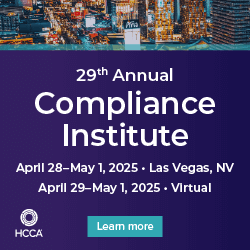With apologies to new age gurus, successfully navigating an inspection by the U.S. Food and Drug Administration (FDA) is a state of mind, says Kara Harrison, MS, RAC, RQAP-GCP, a project manager with FDA Quality and Regulatory Consultants.
Clinical trial practitioners who are in the proper “zone” are in a constant state of “informed anticipation and preparation,” Harrison said. It’s not a luxury; regulators expect it, she stressed. “Inspection readiness is usually comprised of a trifecta of key elements: attitude, approach, and activation,” she said.
“Attitude is everything,” Harrison told attendees of ACRP’s Southeast Regional Conference in Durham, N.C. earlier this month (October 4). “Each individual plays a role in helping foster a positive corporate outlook, but it has to be a part of [the] culture and [it] has to be a priority,” she said.
“Start from a place of anticipation, not fear,” she advised. It begins with semantics. For example, use non-adversarial terms when developing an FDA inspection readiness plan (e.g., call the space in which you get ready for an inspection the “Preparation and Triage” room instead of the more traditional “War” room).
It’s also critical to identify and empower your organization’s internal point person to deal with the FDA directly, she said. That individual should have:
- The authority to coordinate and direct preparation and inspection facilitation activities, Harrison said. It’s critical the person is “empowered to hold people accountable and supported by [the] firm to do so,” she stressed.
- The ability to build teams and interact with multiple departments, personalities, and roles.
- Demonstrated project management skills.
- Knowledge of the areas to be inspected and/or experience with inspection preparation.
Harrison also advised handing the inspector a “welcome” package when he or she walks into your office on day one of the inspection. It should contain materials “echoing the relevant compliance program or information requests” from the inspector in the days and weeks leading up to the onsite visit. It should also include information and materials commonly requested during any inspection, such as company overviews and organizational charts, study-specific documents, Wifi access codes, and other basic operational details.
On the other hand, don’t complicate the process by being over eager. For example, it is perfectly acceptable to tell an inspector you don’t have a particular piece of information they’ve requested, but that you’ll get it for them in a timely fashion. “Do not guess, or have a computer in the room, unless you are presenting a slide deck or are the scribe,” Harrison said.
Author: Michael Causey



